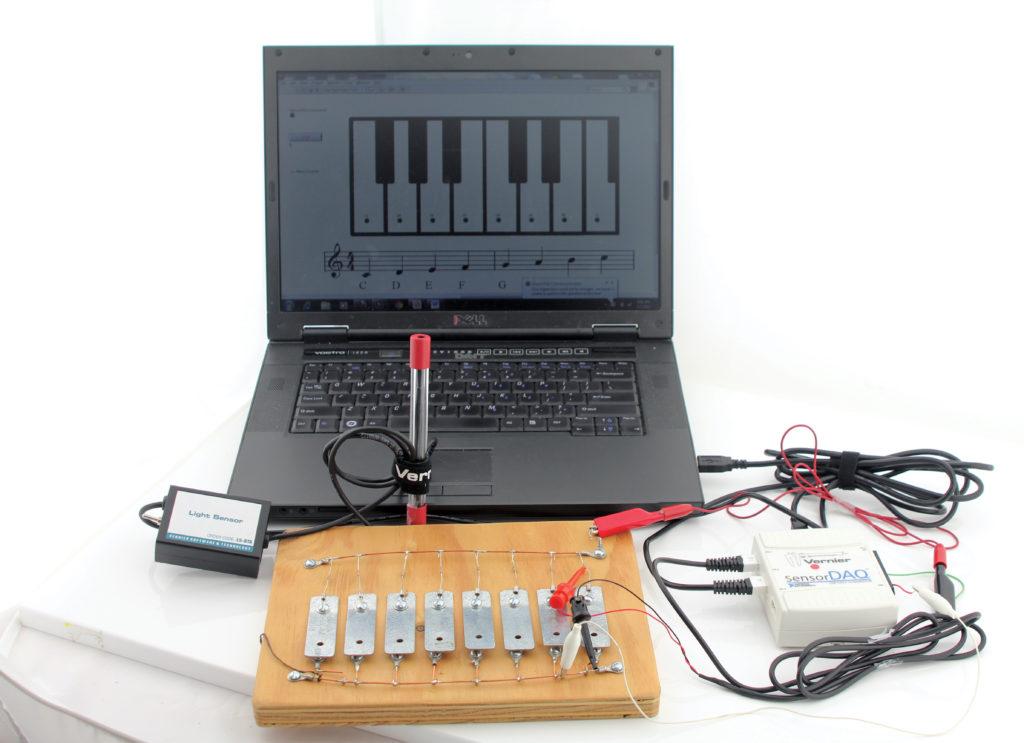
Steve Decker, an instructor of electronics at Oregon Episcopal School in Portland, used the book to acquaint his students with instrumentation control. After completing exercises in the lab book, Decker’s students created independently-designed projects to demonstrate what they had learned. In a recent class, for example, two students created an electric piano. The team coupled the NI LabVIEW program with the Vernier SensorDAQ data-acquisition interface to measure a variable voltage. The students then used their data to set the frequencies of the tone coming from a computer.
With this approach, analog output from the SensorDAQ provided a 5 V DC source. Each “key” then created a different resistive voltage divider, which produced a unique reading on the Voltage Probe. The readings obtained determined the frequencies (C4 to C5) for the tone generator in LabVIEW as played back through the computer speakers. The students added a second sensor, as well, to control the amplitude of the tone. For this, they chose the Vernier Light Sensor, which measures ambient light. The team scaled values derived from this sensor to match the rest of the system and modulated the overall amplitude of the signal produced.
Possible extensions to this project include enabling
- multiple tone generators with independent amplitudes to produce harmonic content for the tones, which improves sound quality.
- two or more keys to be pressed at the same time to produce a chord.
- a simple voltage divider made up of one fixed resistor and a photoresistor to produce a variable voltage that controls the frequency, which produces a more continuous, Theremin-like effect.
